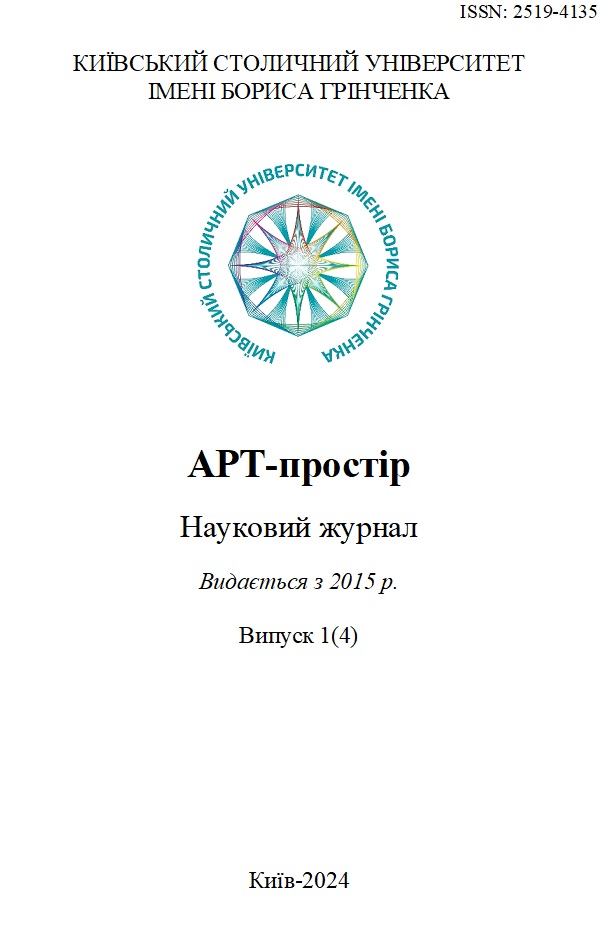VIRTUAL AND AUGMENTED REALITY TECHNOLOGIES IN THE FINE ARTS OF THE FIRST HALF OF THE XXI-ST CENTURY: HISTORIOGRAPHICAL REVIEW
Abstract
The article analyzes the history of VR/AR research in the field of art and design throughout 21st century scientific publications. Use of virtual spaces for the presentation of artworks and enhancement of visitor engagement is not a new addition to cultural space and was experimented with by multiple people, including the author of this article himself. VR is also increasingly often, albeit, still being more of an experimental novelty, used as a tool for teaching and/or learning art and history, sometimes — technical disciplines like engineering or physics. Solely art-focused research, however, is quite lacking in numbers, in part because there aren’t many examples of the use of VR/AR in art and design projects, at least so far, yet there have been a number of different experiments ranging from psychology-adjacent to ones being on the line between art and IT. For the purpose of this article, questions of distinction between “true VR” (fully 3D interactive world experienced through VR gear), virtual environments that do not need VR gear and various types of artificial and mixed reality and differences of between them, especially when it comes to artistic use, will likely be left out for separate discussion. We are more interested in how the art world used, iterated upon and ultimately accepted the freedom and new forms of expression allowed by virtual, augmented and mixed reality technologies. As most notable and expressive works and more importantly scientific research of these works have appeared in the 21st century, we will limit our overview of art-specific papers to this time period. Papers reviewed in this article are divided into four different categories, each with its own general research goal that most of the articles inside the same group share between themselves: virtual museums or galleries and preservation of cultural heritage, artworks and immersive typography, education, behavioral research on the basis of viewer-artwork interactions. With first three categories being well understood, when it comes to the usefulness of research results and experiments themselves, fourth one is exceptionally useful as relatively easy and universal way to “predict” viewer behavior in different circumstances for both gallery owners and artists (gallery layouts, lighting, artwork composition, color contrast between artworks, etc).





